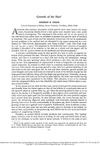Lanceolate hair-J (lahJ): a mouse model for human hair disorders [In Process Citation]
January 2000
in “
The Mouseion at the JAXlibrary (Jackson Laboratory)
”
TLDR The lanceolate hair-J mutation in mice helps understand human hair disorders like Netherton's syndrome.
The lanceolate hair-J (lahJ) mutation in mice, discovered in 1994, served as a model for studying human hair disorders. Mice with this mutation exhibited symptoms such as alopecia, lack of vibrissae, and skin wrinkling with age. They developed a noninflammatory skin disease with follicular dystrophy and various hair shaft abnormalities, including trichorrhexis nodosa and invaginata, similar to human conditions like Netherton's syndrome and monilethrix. The mutation was autosomal recessive, located on mouse Chromosome 18, and associated with elevated serum IgE levels, paralleling features of human Netherton's syndrome.
